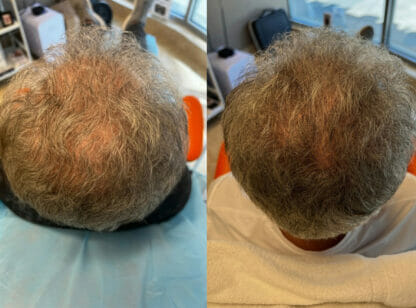Joint and spine ailments can severely limit mobility and diminish quality of life, especially as we age. Treatment options for conditions like chronic knee pain and spinal discomfort have traditionally been medications to manage pain and surgical procedures. Unfortunately, these treatments often do not result in the desired improvement in pain and mobility.
Today, regenerative therapies are emerging as a non-surgical alternative that leverages the body’s natural healing processes to repair damaged tissues, offering patients a less invasive and more effective path to recovery. The National Institutes of Health (NIH) and many other standards in medicine are noting the revolutionary benefits of regenerative medicine and positive study results are prolific.1-4
Healing from within. Regenerative medicine focuses on healing the body from within, using treatments derived from biologics like umbilical cord tissue and platelet-rich plasma (PRP). These tissues are potent agents for regeneration when administered directly into joints. These therapies help rejuvenate tissue, reduce inflammation and promote long-term healing. They are ideal for addressing musculoskeletal conditions that in the past might have required surgery. These regenerative biologics are obtained from U.S. laboratories that adhere to the FDA’s rigorous standards and processes, ensuring the highest ethics and testing.
A less invasive option. Regenerative treatments aim to restore function by repairing the damage at the cellular level. For example, a patient with knee pain can experience repair and reduction in inflammation without undergoing a knee replacement in just one simple injection. Similarly, individuals with chronic spinal pain may avoid spinal surgery through regenerative therapies which can be administered in an outpatient setting with minimal downtime and a faster return to normal activities.1-4
Individualized care. One of the greatest benefits of regenerative therapy is the personalized approach it offers. Each treatment plan is tailored to the patient’s specific condition, lifestyle and long-term wellness goals. A qualified medical team will assess the pain generator and seek to stabilize the system as a whole, creating tailored treatments based on the injury age, function of the joint and patient budget. This patient-centered approach ensures optimal outcomes.
By combining regenerative therapies with complementary treatments like functional nutrition, physical therapy, hyperbaric oxygen therapy, red light therapy and more, you can address both the symptoms and the underlying cause. This comprehensive approach provides a holistic solution for sustained health and longevity.
Not everyone is a candidate for regenerative therapy, thus evaluation by a qualified physician trained in both traditional pain management and in cell therapy is important. The main contraindication is recent diagnosis of cancer or active cancer. Regenerative therapy is widely considered safe and there are not any known side effects.
Long-term outcomes. Regenerative medicine focuses on more than just pain relief; it aims to restore the quality of function and how the body moves. Patients who experience joint pain that began over 20 years ago are able to return to playing golf, enjoying tennis or performing daily tasks with ease. These therapies also offer long-term benefits to joints allowing people to age with grace and vibrancy.
Whether you’re managing chronic pain or seeking to enhance overall well-being, regenerative medicine offers innovative treatments that deliver real results.
Dr. Smith is an interventional spine and sports medicine specialist and medical director of Prospera Regenerative in Indian Wells. Angela Renzulli is a regenerative medicine consultant and can be reached at (760) 459.2490. For more information, visit www.prosperaregen.com.
References: 1) https://pubmed.ncbi.nlm.nih.gov/30245848/; 2) https://pubmed.ncbi.nlm.nih.gov/34448473/; 3) https://pubmed.ncbi.nlm.nih.gov/37228215/; 4) https://ouci.dntb.gov.ua/en/works/9GbOmxWl/












































Comments (0)